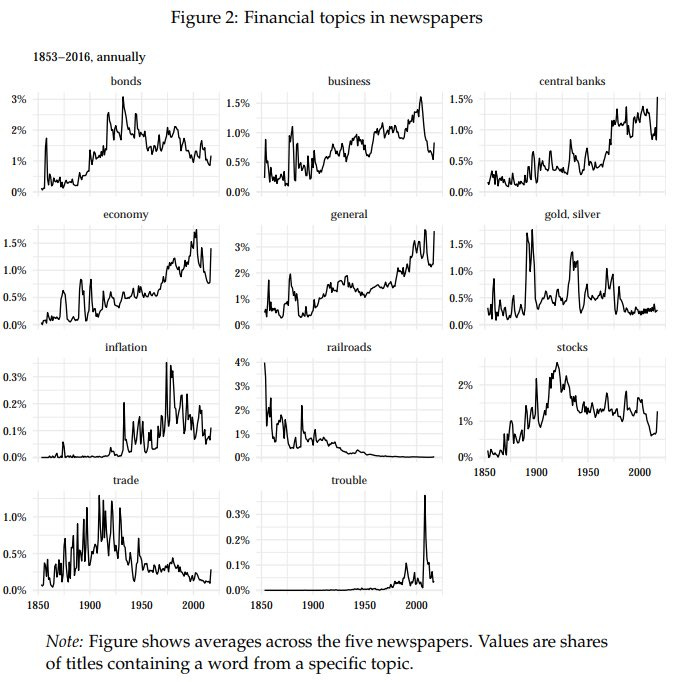Imagining The 2020s via the Gilded Age and Protestant Reformation
Readings of Chamath Palihapitiya's Social Capital 2019 Annual and Tuur Demeester's Adamant Research report "Bitcoin Reformation"

Some interesting reading from Chamath Palihapitya’s 2019 Social Capital Annual Report and Adamant Research’s piece on a “Bitcoin Reformation”.
The last 12 to 18 months have been charged and filled with new kinds of tensions. It seems like the first world has landed in a strange place - with people at odds, emotionally distant even if increasingly interconnected, and ready to come apart.
This is what makes the intro from Social Capital’s annual report very relevant:


I think of this share from Jamie Catherwood. Notice the use of the word “railroad”.

Why the comparison? Palihapitiya draws historical parallels between today’s 2020 age of disruption platforms and the Gilded Age of the railroads of the 19th century, for their economic might and transformative influence. What followed the Gilded Age was the Progressive Era which spanned the “1890s to the 1920s” and whose “main objectives … were addressing problems caused by industrialization, urbanization, immigration, and political corruption. The movement primarily targeted political machines…”
Drawing on this historical analogy, the arrow of history points to challenges for the platforms of disruption, the “FANGs” of the 2010s, including breakups, and a data balkanization - a social distancing for all the data of many software services we use daily.

What’s on the horizon? What could be on the ascension? If you know Palihapitiya, one of those things could be bitcoin. Born in deflationary panic a decade ago, and perhaps about to be tested by inflation in the 2020s, bitcoin could also be understood in a historical context.
Tuur Demeester’s Adamant Research piece relies upon the same device as the Social Capital in its framing of a economic and societal context for his analysis: history.

Adamant Research goes further back in time than the 19th Century’s Gilded Age, and enters the Protestant Reformation.

Let’s delve into those 4 conditions and attach Adamant Research’s modern analogues.
Condition #1: A RENT-SEEKING MONOPOLISTIC SERVICE PROVIDER
the Catholic Church was a monopolistic provider of spiritual
services, and that the control that religious authorities had over portions of
the legal system provided them with the market power to exclude rivals
The Modern Equivalent to Condition #1: The Modern Financial System itself
Since the 1944 Bretton Woods agreement, the US dollar has enjoyed the
“exorbitant privilege” of being the world’s reserve currency. Similar to the
Catholic Church in the 16th century, financial authorities’ control over portions
of the legal system provides them with the market power to exclude rivals.
Condition #2: TECHNOLOGICAL REVOLUTION: CATALYST FOR CHANGE
In the 16th century, several world-changing inventions…
the printing press lowered the cost of a book from a year’s labor to the price of a chicken,
double entry bookkeeping accelerated international commerce,
compass and hourglass improvements … unlocked world exploration
and the boom in scientific research which led to more inventions
The Modern Equivalent to #2: THE DIGITAL REVOLUTION
telecommunications and email allow for working remotely,
the commoditization of computation and data storage massively lowers infrastructure overhead which allows for startup costs to decline,
open source software provides entrepreneurs with robust and free
building tools,
cryptography opens up a suite of defensive technologies for permissionless security
and social media allows for rapid andnon-bureaucratic dissemination of information.
Condition #3 NEW ECONOMIC CLASS
These are cohorts of change oriented people
The Merchant Class who gathered power and disrupted the Church and Royalty
The Millennials who gather on networks and discount the current monetary system
Condition #4 CREDIBLE STRATEGIES FOR DEFENSE AND ESCAPE
The ability to challenge the status quo. This was the case for the Dutch capacity to flood its lands to deter invaders. The modern analogue cited by Adamant is cryptography.
In the 21st century, the defensive technological suite available for people
who question the economic status quo is cryptography—which can enable
privacy and protection from asset seizure…
Two different historical analogies pointing to one common outcome, massive change for the pre-existing technological and financial pecking order.

